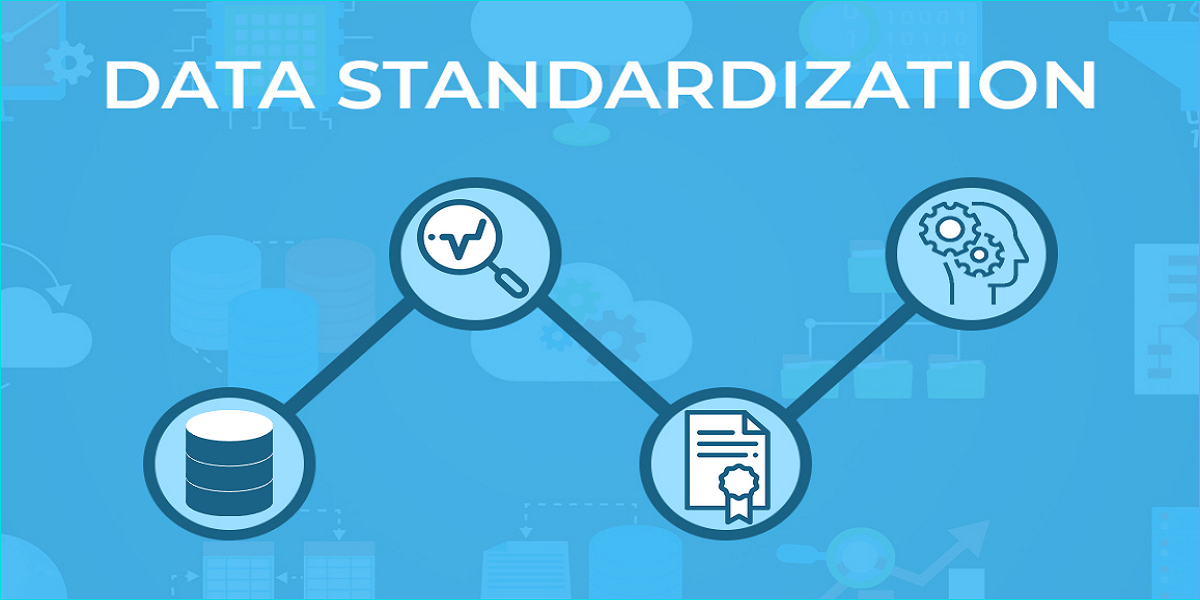
What Is Data Standardization, And Why Does It Matter?
- By Jessica Campbell
- 17-11-2022
- Technology
Businesses rely on effective operations, and one of the most crucial components for maintaining operational efficiency is to preserve structured data across several systems. Standardizing data across divisions in your business or organization takes time and effort. However, with clear, uniform data standards, every division can access the data they need without worrying about discovering new formats.
In this blog, we will talk about the idea of data standardization, how it is now implemented across convoluted enterprise hierarchies, and why it is such a critical component of modern business.
Data Standardization: The Concept
Data standardization converts data into a uniform format that enables comparison, cooperation, and study. Data reformatting and transformation must be done before data entry into a centralized system.
The user can reliably assess data as a result of data standardization. Data is stored by various systems in various ways. An automation tool may therefore need to adapt to the structure of the data it collects from various sources. However, data should be standardized to examine data properly.
There are often two techniques to standardize data:
External Sources: Obtaining information from external systems, then transferring the entries to an output schema
Internal sources: Obtaining information from internal systems and producing a single, dependable dataset for the company
Data Standardization: Use Cases
Let's examine the following use cases to discover how data standardization is beneficial in real-world situations:
Use Case #1: To evaluate inventory, travel businesses use information from numerous air passenger carriers, hotels, restaurants, and vehicle rental companies. However, they must standardize data to provide their clients with an accurate availability review.
Use Case #2: Companies utilize data standardization to collect financial information from each subsidiary. This is crucial to ensure the accuracy of financial documentation. In addition, data automation tools can facilitate data collection, standardization, and storage in a unified system for easy access and analysis.
Data Standardization: Importance
Data standardization is crucial because it enables reliable data transmission across various systems. Standardization would make it simpler for computers to exchange data and communicate. Data processing, analysis, and database storage are all made simpler by standardization.
With this strategy, firms may use their data to make informed business decisions. Additionally, when data is standardized, businesses may more readily compare and analyze information to produce insights they can utilize to enhance their operations.
One of the most significant advantages of data standardization services is that it assists businesses in avoiding making judgments based on inadequate or erroneous data. Moreover, it allows companies to improve their bottom line and ensure that their data is complete and accurate.
Data Standardization Process
There are numerous approaches for your company to standardize its data. Depending on the reason you require the data initially will determine how you gather, store, and share it.
It’s beneficial to provide answers to the following queries before selecting the approach.
Know your business requirements
Organizations generate a lot of data; therefore, standardizing it is essential to use it efficiently. Look at your data types and how they are set up first. Is everything in one spot? Exists a range of formats? Is it current and accurate? Once you comprehensively understand your current data situation, you may start recognizing areas where standardization might be beneficial.
Next, think about your company’s objective and the choices you must make. What specific kinds of data would you need to draw those conclusions? Would standardization make accessing and analyzing the data easier for you?
You can fully comprehend the data you're gathering when you know the responses to these questions. Moreover, with this information, you may understand how to categorize data consistently and normalize substantial data sets.
Analyze the point of data entry
In today’s technologically advanced world, data is present practically everywhere. There are many ways to enter data, from learning about potential consumers through their browser behavior to explicitly requesting it via a questionnaire, email, or newsletter.
Therefore, it's helpful to clarify and respond to inquiries like- where are you obtaining the data from? How frequently do you get new data? By keeping these considerations in mind, you can speed up the data standardization process and ensure your data is of the highest quality.
Establish data standards
When working with data, standards for formatting and organization must be established. Doing this ensures that everyone operates under the same presumptions and that data can be easily transferred across departments.
Data standards are regulations or standards that specify how to arrange and format data. By setting data standards, you can ensure that your information is uniform and simple.
Clean your data
At this point, you know the data you require, where to obtain it, and how to standardize it. But first, you must ensure the data is clean before organizing it. Clean data is information that is accurate, thorough, and appropriately formatted.
It is crucial to be accurate before working with the data or letting automated tools use it. You risk misinterpreting data and analytics and coming to unwise business conclusions if you don't.
Utilize existing data standardization measures
You may rely on existing procedures to assist in standardizing your data. Automation solutions make this intuitive, allowing you to select from various data standardization techniques.
For instance, use batches and list imports based on templates. For example, batch normalization is sound when you want to standardize records such as state names, adjust title cases, or normalize contact numbers so auto-dialers can work.
Normalize data with a data automation platform
You could encounter a wide range of data kinds and formats. As a result, evaluating and interpreting all the data may take time and effort. But standardization can make it easier to work with.
Using a data automation platform is one way to accomplish this. The technology can also help you remove duplicate entries and provide specialized and targeted information to serve your customer base better. Furthermore, and most significantly, you can be assured that the data will be there as it should be for your company operations and purposes, guaranteeing accurate analytics.
Final Thought
Data standardization is a procedure of managing and organizing data so that businesses may access and utilize it. This procedure is crucial because it enables businesses to make wiser decisions, increase productivity, and create financial savings. There are several methods for standardizing data; the most efficient one will depend on the kind and volume of data. However, data standardization, a vital component of data management, can benefit all firms.
Recent blog
.jpg)
Why Specialized Ecommerce SEO Companies Scale Growth Faster?
SEO | 12-09-2025.jpg)
AI vs. Human Intelligence: Can Machines Really Think?
Artificial Intelligence | 12-09-2025




